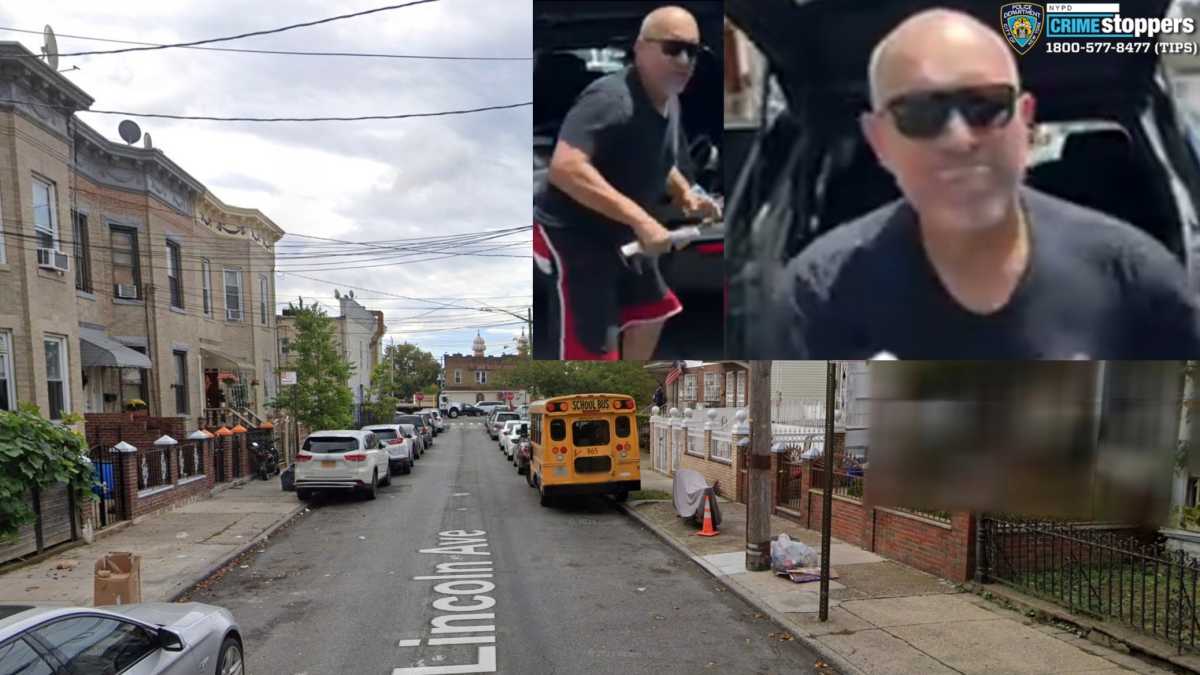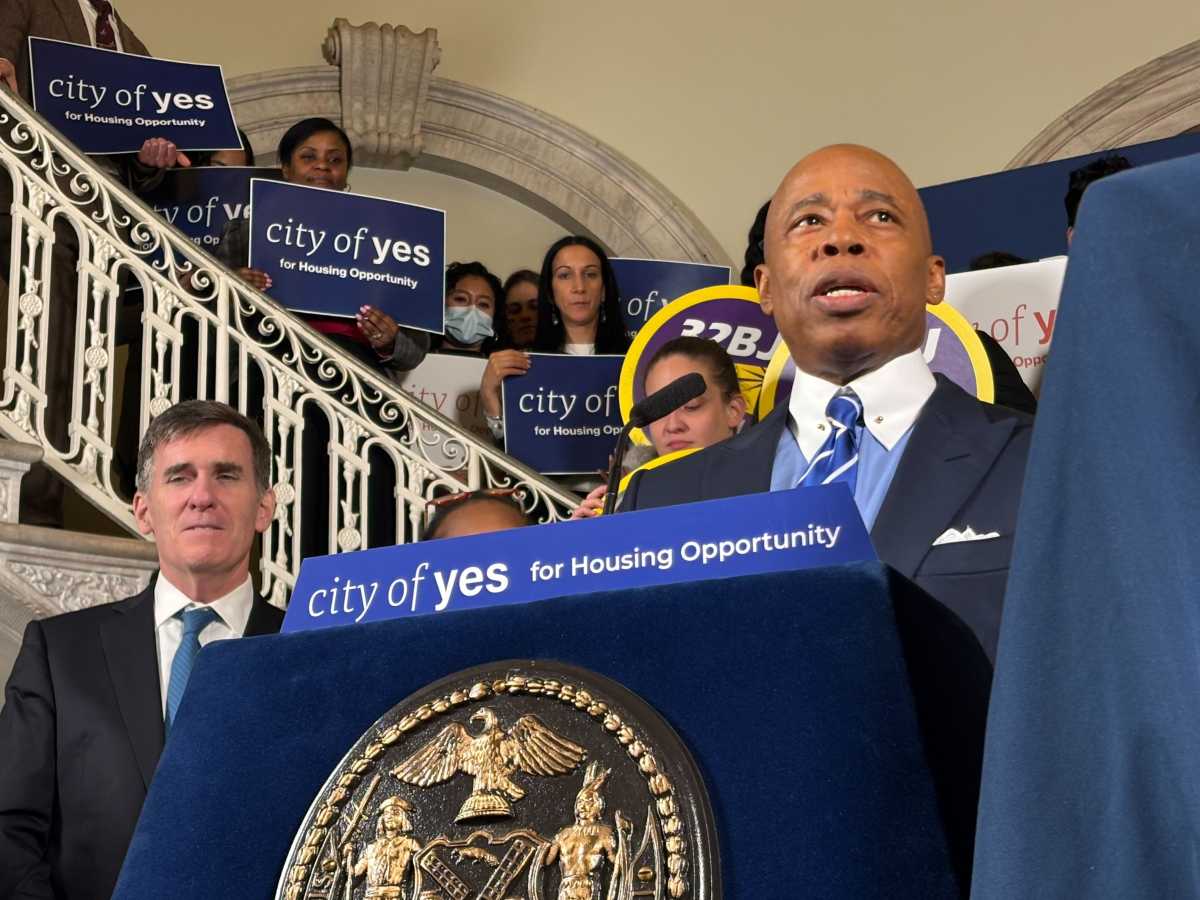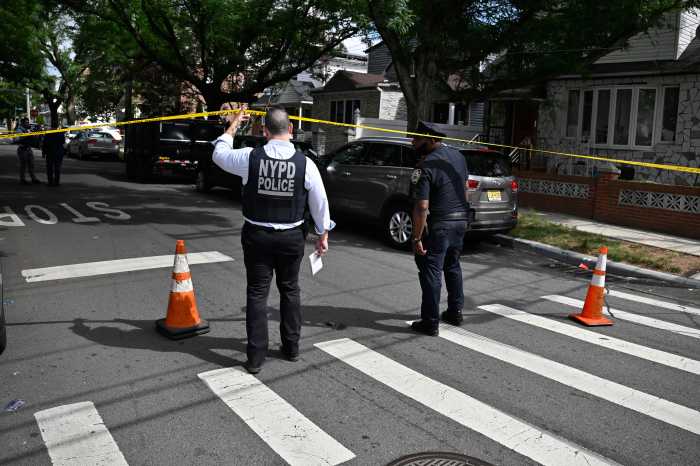A state Supreme Court judge heard arguments last week in a lawsuit brought
against Swedish furniture store Ikea by Red Hook community groups that
say the city illegally granted the company the right to rezone —
and build on — the Red Hook waterfront.
According to the complaint filed in Manhattan’s civil court, the
City Council and City Planning Commission gave Ikea the nod based on “false
information” the company provided them.
Antonia Bryson, the lawyer representing the Red Hook civic groups, argued
that the furniture giant was remiss in reporting the impact on traffic,
pollution and local business should a 346,000 square-foot store be constructed
on the 22-acre former New York Shipyard site between Dwight and Columbia
Streets along the Erie Basin.
The suit hopes to void the Environmental Impact Statement (EIS) used for
the review process by the city and overturn the approvals granted by City
Planning and the Council.
The civil suit was filed by groups of community organizations including
the Coalition to Revitalize Our Waterfronts Now (CROWN), Groups Against
Garbage (GAG) and the Red Hook Civic Association, and also includes area
residents as plaintiffs.
The judge hearing the case, Justice Karen Smith, told Bryson and the defendants,
who were represented by Daniel Greene, for the city’s Corporation
Counsel, and Karen Binder of Wachtel and Maysr, for Ikea, that she wanted
to hear arguments based on points the petitioners felt were overlooked
in the EIS.
Bryson argued that Ikea’s projected completion date of 2006 was purposefully
selected for their EIS to avoid accounting for traffic changes looming
in years to come.
A supplement to the EIS, she pointed out, accounted for the city’s
plans to bring luxury cruise lines to Piers 11 and 12 in Red Hook. But
Ikea neglected to account for the creation of the Hamilton Avenue Waste
Transfer Station at 488 Hamilton Ave., which would add 267 truck trips
per day, the complaint says, or the Hamilton Avenue Drawbridge reconstruction,
which could narrow the avenue’s passage by two lanes in each direction.
“They were deliberately picking and choosing [new projects to include
in the analysis] in an irrational manner,” said Bryson.
Justice Smith suggested what could result from such developments.
“This community is going from an underdeveloped, perhaps, community
to, all of a sudden, getting all of this at once and the traffic is going
to be a nightmare,” she said.
“Nobody can say that [it isn’t] and if they do, they’re
not being truthful,” she said.
In their defense, Binder argued her client “was obviously very concerned
about traffic,” she said. “They want their customers to be able
to get to the store and to come back again.
“Every single traffic impact has been mitigated,” she added.
As a mitigation effort, Ikea will pay for the addition of six lights in
the neighborhood in places where stop signs now exist, and cover the cost
of a traffic-directing cement barrier where cars will have to exit the
Brooklyn-Queens Expressway to drive to Ikea.
Binder also noted that 70 percent of Red Hook residents are in favor of
this project.
Asked by Justice Smith how she knew that, Binder responded that the community
“testified at every single public hearing. And we probably had, easily,
80 presentations throughout Brooklyn and in the Red Hook community.
“Ikea is an extraordinary company. It has done here what nobody else
has done,” she concluded.
What was done, said Bryson, was a very good public relations job.
“The people who are opposing it here are not supported or funded
… to oppose Ikea. They are doing this out of their deeply-held belief
that it is wrong for this neighborhood,” she said.
Smith is expected to make a ruling in one to three months.





















